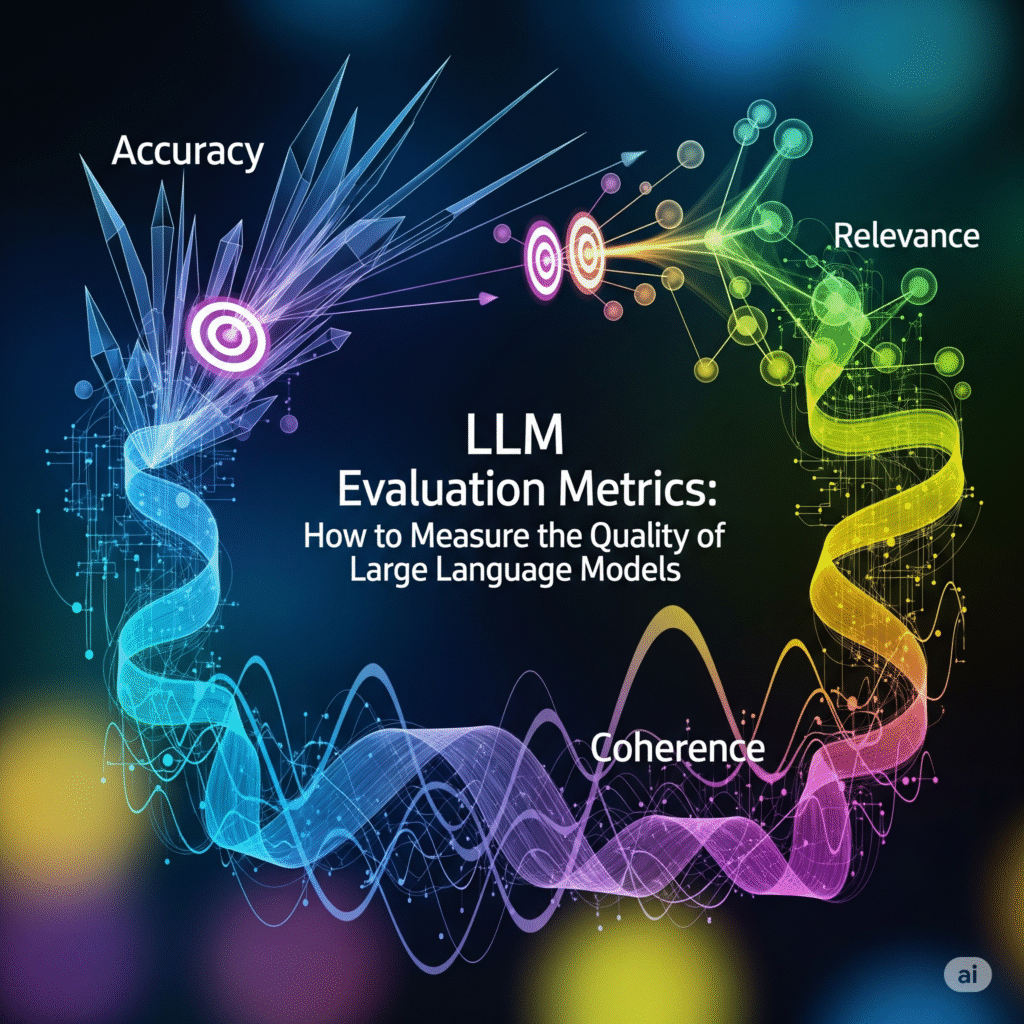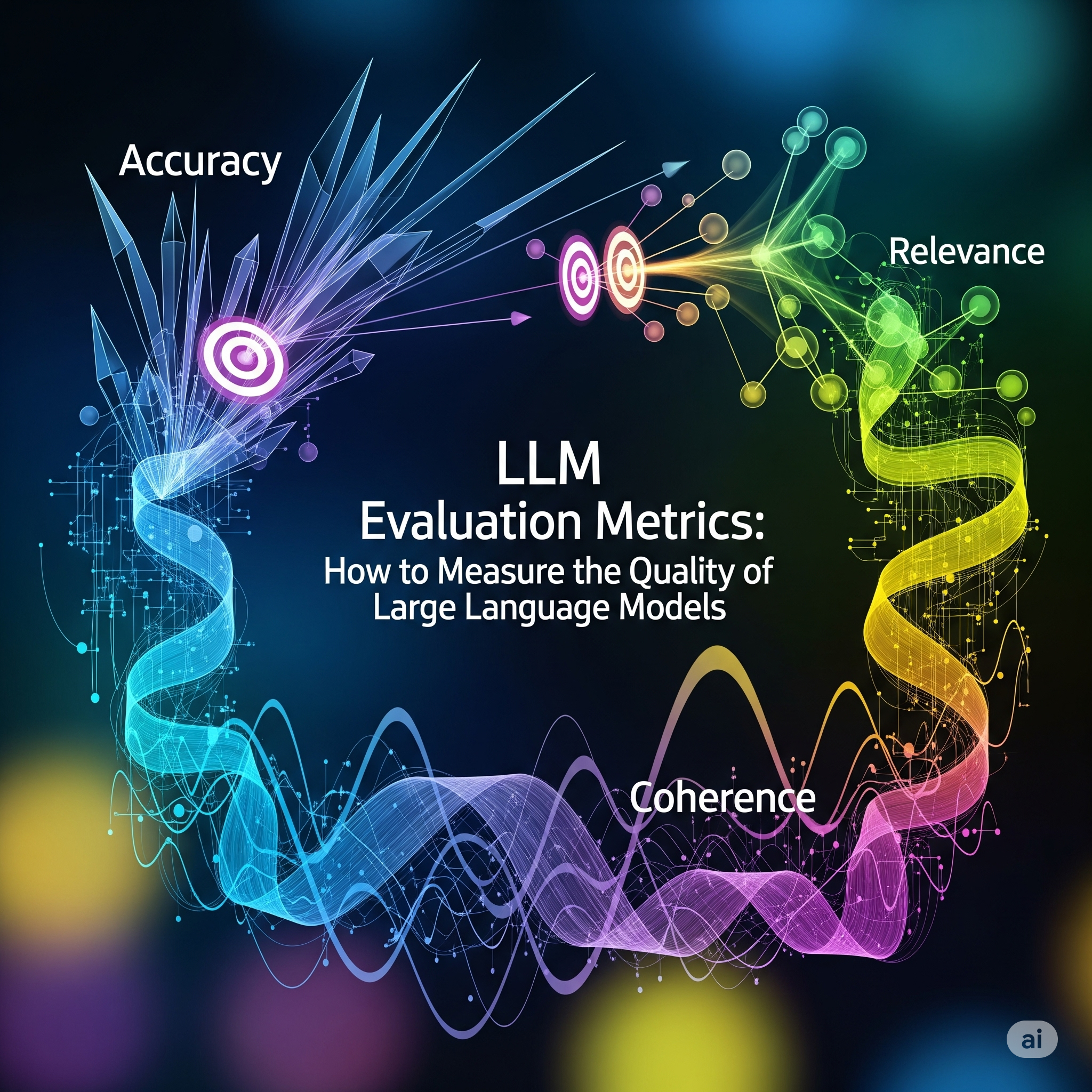Large Language Models (LLMs) such as GPT, LLaMA, and Claude are transforming the AI landscape. From chatbots that can converse naturally to AI tools capable of generating code, content or even solving complex problems, LLMs are the backbone of modern intelligent applications. However, building an LLM is only half the battle. Ensuring that it performs reliably, aligns with human expectations, and generates accurate outputs is just as important.

Without proper evaluation, even the most sophisticated models can produce outputs that are misleading, biased, or inconsistent, potentially undermining trust in AI systems. This is why LLM evaluation has become a crucial step for developers, researchers, and organizations leveraging AI technology. In this article, we’ll explore why LLM evaluation matters, the key metrics to track, best practices, and the challenges in assessing these powerful models.
Why LLM Evaluation Matters
Traditional machine learning models are often evaluated using metrics like accuracy, precision, or F1-score. While these work well for classification or structured prediction tasks, LLMs produce open-ended text, making evaluation more complex. The quality of an LLM is determined by multiple dimensions:
- Factual correctness: LLMs may sometimes produce hallucinations—statements that are grammatically correct but factually wrong. Detecting and minimizing these errors is critical.
- Fairness and inclusivity: LLMs can inherit biases present in their training data. Evaluating outputs for bias ensures equitable and ethical AI.
- Consistency in reasoning: Users expect coherent and logically sound responses. Inconsistent reasoning can damage trust.
- User satisfaction: The ultimate measure of success is whether the model meets user needs, provides value, and aligns with expectations.
A robust evaluation framework ensures reliability, trustworthiness, and safety, which are essential for both commercial applications and research deployments.
Key LLM Evaluation Metrics
1. Perplexity
What it measures: Perplexity quantifies how well the model predicts the next word or token in a sequence. Lower perplexity indicates that the model better understands language patterns.
Why it matters: While a low perplexity suggests strong linguistic understanding, it doesn’t guarantee factual accuracy or logical consistency.
2. BLEU (Bilingual Evaluation Understudy)
What it measures: BLEU evaluates the overlap between generated text and reference text, commonly used in machine translation.
Best for: Short, literal outputs like translations.
Limitations: BLEU struggles with creative or flexible text, making it less effective for open-ended tasks.
3. ROUGE (Recall-Oriented Understudy for Gisting Evaluation)
What it measures: ROUGE calculates the overlap of words or sequences between generated text and reference text.
Best for: Summarization tasks where accuracy and completeness matter. For example, evaluating whether an AI-generated summary captures the main points of a news article.
4. Exact Match (EM) & F1 Score
What it measures: EM checks for exact matches between the generated and expected output, while F1 accounts for partial overlap.
Best for: Question answering, knowledge-based tasks, or structured outputs like filling forms or databases.
5. Human Evaluation
What it measures: Human evaluators assess fluency, relevance, correctness, creativity, and overall quality.
Why it matters: Automated metrics may miss nuances like tone, style, or subtle errors, making human judgment indispensable for high-stakes applications.
6. Truthfulness & Hallucination Rate
What it measures: The percentage of responses that are factually correct versus incorrect.
Importance: Hallucinations can spread misinformation, which is especially problematic in domains like healthcare, law, or finance.
7. Response Diversity
What it measures: Variety in outputs for similar prompts.
Best for: Creative writing, ideation, and brainstorming, where repetitive or predictable answers reduce usefulness.
8. Toxicity & Bias Scores
What it measures: Detection of harmful, offensive, or biased language in model outputs.
Importance: Ensures ethical AI deployment and safeguards against potential harm to users or communities.
Best Practices for LLM Evaluation
- Use Multiple Metrics: No single metric can capture all aspects of model quality. Combining automated evaluation with human review gives a more holistic view.
- Evaluate in Context: Testing LLMs under realistic scenarios reveals limitations that benchmarks might miss. For example, testing a customer support bot with actual user queries is more informative than synthetic datasets alone.
- Track Performance Over Time: Monitor metrics consistently to detect regressions and ensure that improvements in one area don’t compromise others.
- Incorporate User Feedback: Real-world feedback highlights hidden issues and helps refine models for practical deployment.
- Domain-Specific Benchmarks: Use tailored datasets for specialized tasks, such as medical diagnosis, legal reasoning, or code generation, to ensure relevance and accuracy.
Challenges in LLM Evaluation
Evaluating LLMs is inherently challenging due to:
- Subjectivity: Human judgment can vary, leading to inconsistent assessments.
- High cost: Large-scale human evaluation is resource-intensive.
- Rapid model evolution: Frequent updates to models require continuous re-evaluation to maintain accuracy and safety.
A hybrid evaluation approach, combining automated metrics for scalability and human evaluation for nuance, is the most effective strategy.
Conclusion
Evaluating Large Language Models goes beyond simply achieving high benchmark scores. It is about ensuring accuracy, reliability, and user trust. By using a combination of metrics like perplexity, ROUGE, human evaluation, and truthfulness checks, organizations can gain a comprehensive understanding of model performance.
As LLMs become integral to business operations, research, and creative workflows, robust evaluation practices are essential. They provide the foundation for AI systems that are safe, ethical, and impactful, capable of meeting user expectations while minimizing risks associated with bias, hallucination, and misinformation.
Related Reads
- Synthetic Data in Machine Learning: Proven Benefits, Risks and Use Cases
- Simplifying the Mathematics of Neural Networks and Deep Learning
- LLM Engineer Toolkit – Your Complete Map to 120+ LLM Libraries
- Prompt Engineering vs. Fine-Tuning: Choosing the Right Strategy for Optimizing LLMs in 2025
- MLOps in 2025: Best Practices for Deploying and Scaling Machine Learning Models
External Resources
“Language Models are Few-Shot Learners” (GPT-3 Paper) – Introduces evaluation methods for large language models.
https://arxiv.org/abs/2005.14165
“Beyond Accuracy: Behavioral Testing of NLP Models with CheckList” – Discusses robust evaluation frameworks for NLP models.
https://arxiv.org/abs/2005.04118
“TruthfulQA: Measuring How Models Mimic Human Falsehoods” – Focuses on evaluating truthfulness and hallucination in LLMs.
https://arxiv.org/abs/2109.07958


4 thoughts on “Evaluating Large Language Models: Metrics, Best Practices and Challenges”